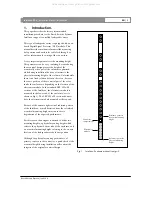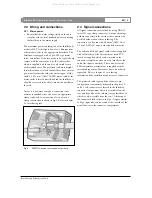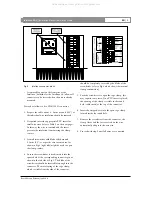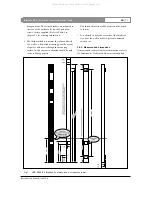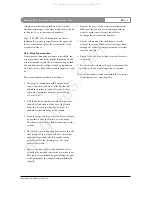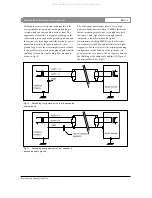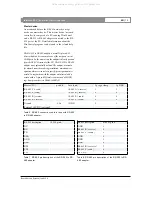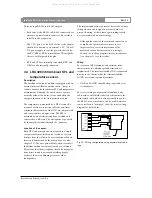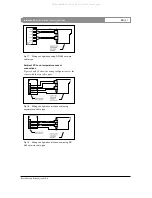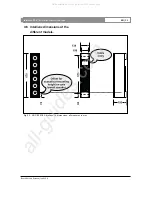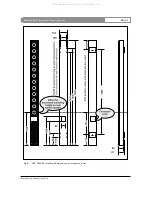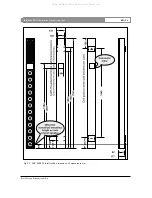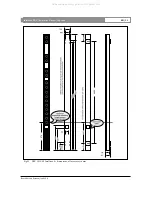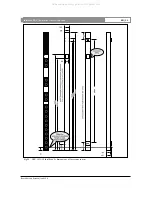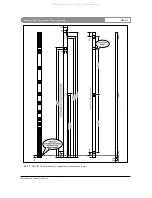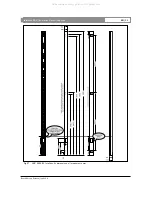
In order to restore the galvanic safety path of the signal
wiring up to a certain level, it is possible to connect a
100 OHMS 1W resistor parallel with the 100nF
capacitor. The isolation of the low frequency ground
loop is partly canceled by this resistor, but the
reduction of the induced noise can still be sufficient
while at the same time some of the benefits of the
original concept are restored. A diagram of this
solution is shown in Fig 12.
Fig 12
Ground configuration with audio ground partly
decoupled for low frequencies
General strategy
The best approach is to interrupt the ground loop just
far enough to get rid of the disturbing effects of it.
Therefore it is advised to start with the full grounded
configuration (Fig 9), if this causes problems try 100
OHMS // 100nF (Fig 12), next leave 100 OHM off
(Fig 11) and the final solution might have to be the
most rigorous method (Fig 10) which will introduce the
danger of trading the hum for RFI problems.
For longer cable runs (> 50m)
Use low output impedance balanced signal sources,
preferably transformer balanced. The CMRR for
higher frequencies will be heavily degraded if the
impedance with respect to ground of both + and -
signal lines is not equal (as with unbalanced outputs).
Degraded CMRR can also be caused by poor quality
cable due to asymmetrical capacitive properties of the
core.
The method described is also well suited for
installations with multiple distributed units on one
signal source. If only one chassis is connected,
interruption of the loop near the signal source is
theoretically a better option, although this method can
cause problems if the output of the audio source is not
equipped with a transformer (electronically differential
output). Due to the capacitive coupling of the (remote
grounded) shield, it is possible that a common mode
interference signal is injected into the output terminals
of the source that may cause misbehavior of the
electronical driver circuit.
In case the chassis is connected to a 100 V or 70 V
distributed system, no ground loop can occur. The
configuration resembles the total decoupled ground
configuration in Fig 10. To adapt the input transformer
to the much higher 70 V / 100 V signal level, the input
is internally attenuated by a differential mode divider
network. This means that the common mode sensitivity
of the attenuated 70 V / 100 V input is not different
from the 0 dB input. If any problems occur caused by
common mode induced RFI, a possible solution is to
reduce the common mode impedance for high
frequencies by adding two 100 pF capacitors as shown
in Fig 13. For optimum CMRR the values of the
capacitors should be matched as close as possible. An
optional ferrite clamp can be used in combination with
the capacitors to enhance the performance of the filter.
Intellivox DDC |
Installation Manual
|
Appendix
Bosch Security Systems | July 2003
EN
| 16
All manuals and user guides at all-guides.com




